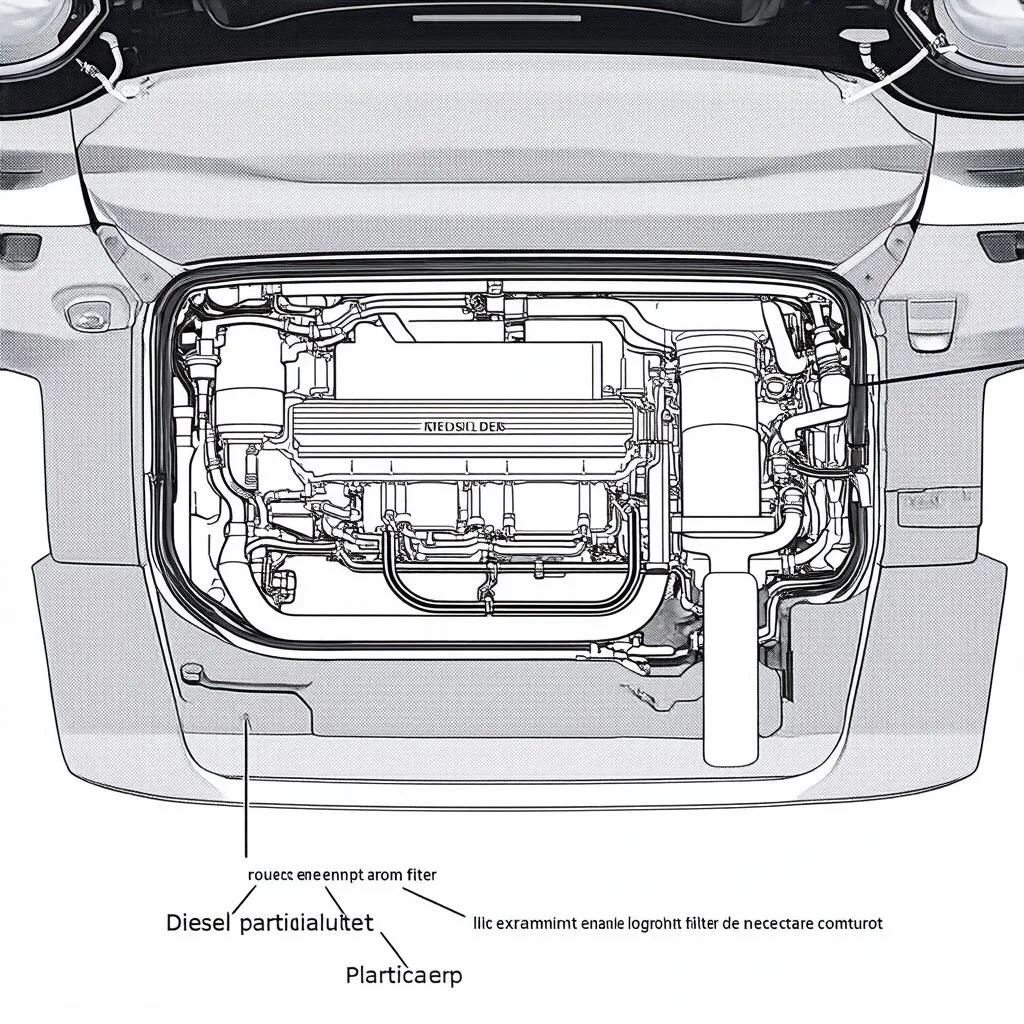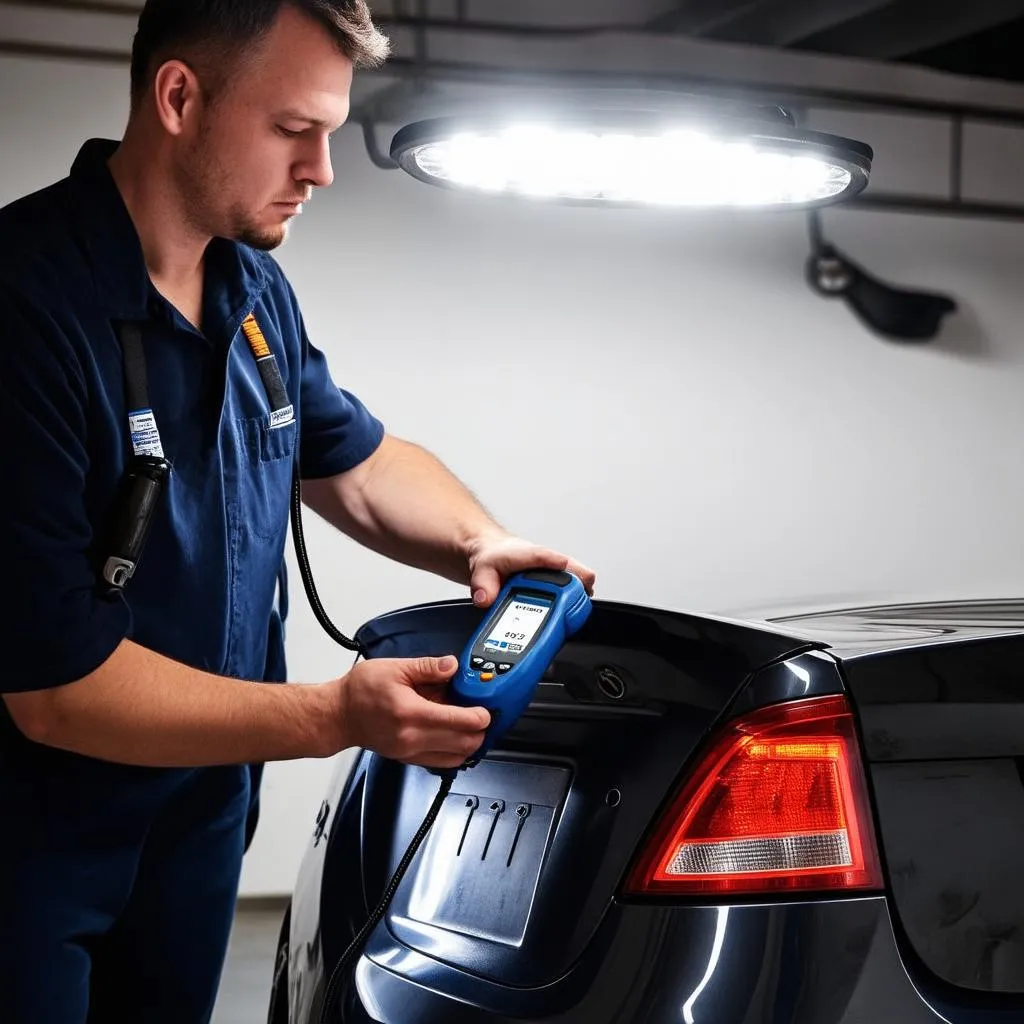Picture this: you’re cruising down the highway, your trusty diesel engine humming along. Suddenly, a warning light pops up on your dashboard. It’s the dreaded DPF warning! Don’t panic, fellow drivers. We’ve all been there. This article will guide you through the ins and outs of diesel particulate filter (DPF) systems, focusing specifically on models from 2013 to 2016, and empower you to take control of your vehicle’s health.
What on Earth is a DPF System and Why Should I Care?
Imagine a filter in your home’s air purifier. Now, picture it installed within your car’s exhaust system, working tirelessly to trap harmful soot and particles generated by the diesel engine. That’s your DPF system in a nutshell. It’s your car’s silent guardian against environmental pollution and plays a crucial role in meeting stringent emission standards.
But like any filter, it needs a good cleaning every now and then. And that’s where things can get a bit tricky (and sometimes expensive!).
The 2013-2016 Era: A Time of Change and Challenges
The years 2013-2016 marked a significant period for diesel cars. Manufacturers were rapidly adapting to stricter emission regulations, leading to the widespread adoption of advanced DPF systems. However, these advancements came with their own set of challenges.
Common Issues Faced by Owners:
- Increased Regeneration Cycles: Cars in this era often experienced more frequent DPF regeneration cycles (the process of burning off accumulated soot). While this is essential for DPF function, it can be annoying for drivers, sometimes causing interrupted journeys and even increased fuel consumption.
- Sensor Malfunctions: The intricate sensor network, a hallmark of this generation’s DPF systems, sometimes acted up. Faulty sensors could trigger false warning lights, leaving drivers frustrated and unsure of the actual problem.
- OBD Compatibility: The introduction of new On-board Diagnostics (OBD) protocols sometimes posed difficulties for generic OBD scanners, making it harder for some mechanics to accurately diagnose DPF issues.
So, how do you navigate this complex world of DPF systems?
Understanding the Language of Your DPF System
Your car speaks to you, but it’s not always in plain English. The key lies in understanding the language of your OBD system.
Here’s how:
- Invest in a Quality OBD Scanner: A reliable OBD scanner specifically designed for European cars (especially for diesel models from 2013-2016) is your best bet. This will provide you with detailed diagnostic information, including DPF-specific error codes.
- Learn the Codes: Familiarize yourself with common DPF error codes. Knowing what “P2440” or “P2453” means can save you unnecessary trips to the mechanic.
- Regular Checks: Don’t wait for the warning light. Incorporate regular DPF checks into your car maintenance routine. Early detection is key to preventing costly repairs.
Expert Insight: “Investing in a good OBD scanner is like having a mechanic in your pocket. It empowers you to take control of your car’s health.” – Hans Mueller, Author of The Complete Guide to Diesel Engine Management.
Tips and Tricks for a Happy DPF System
Maintaining a healthy DPF system doesn’t have to be a daunting task. Here are a few tips to keep in mind:
- Avoid Short Trips: Short trips prevent the DPF regeneration cycle from completing, leading to soot build-up. If you mainly drive in the city, try incorporating a longer highway drive into your routine once a month to help your DPF regenerate properly.
- Use the Right Oil: Using the wrong engine oil can significantly impact DPF lifespan. Always refer to your owner’s manual for the recommended oil specifications.
- Don’t Ignore Warning Lights: Ignoring DPF warning lights is like ignoring a toothache – it won’t go away on its own and will likely become a bigger problem.
A Word on Feng Shui and Car Maintenance
While modern technology governs your DPF system, a touch of ancient wisdom can’t hurt. In Feng Shui, a clean and well-maintained car is believed to attract positive energy and good fortune on the road. Think of it as aligning your car’s energy with the universe for a smoother, more harmonious journey.
Frequently Asked Questions about DPF Systems (2013-2016):
- How often should my DPF regenerate? DPF regeneration frequency varies, but it typically occurs every 300 to 500 miles. However, driving habits, fuel quality, and other factors can influence this.
- Can I drive with a DPF warning light on? It’s not advisable. While you might be able to drive for a short distance, ignoring the warning light can lead to severe engine damage and expensive repairs.
- How can I reset my DPF light after regeneration? Resetting the DPF light usually requires an OBD scanner. However, it’s crucial to identify and address the root cause of the problem, not just erase the warning light.
Still have questions about your DPF system?
We’re here to help! Contact us on WhatsApp at +84767531508 for expert advice, troubleshooting tips, and assistance with diagnostic tools. Our team of automotive specialists is available 24/7 to assist you.
 Diesel Particulate Filter System Diagram
Diesel Particulate Filter System Diagram
More Resources for Your Diesel Journey
- Looking for information on DPF cleaning procedures? Check out our comprehensive guide on DPF cleaning methods.
- Interested in learning about common diesel engine problems? Explore our article on troubleshooting diesel engine issues.
Remember, a little DPF knowledge goes a long way. By understanding how this crucial system works, you can ensure your diesel car enjoys a long, healthy, and environmentally friendly life.
 Mechanic Diagnosing Car with OBD Scanner
Mechanic Diagnosing Car with OBD Scanner
Need further assistance?
Don’t hesitate to reach out. We’re just a message away!